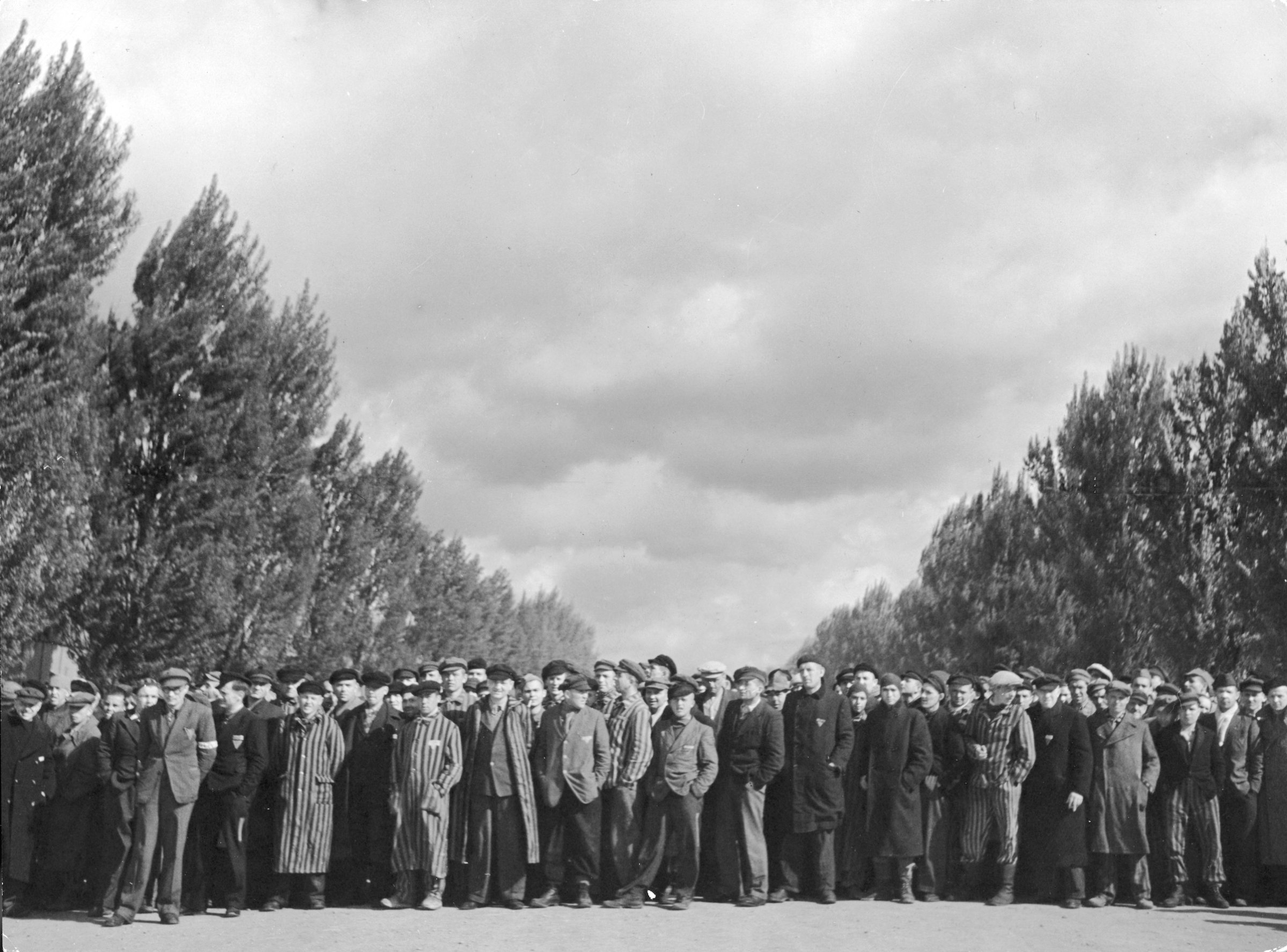
“I have been in Dachau today from the time the first American troops entered until the place was cleared. I will tell you about it chronologically with no attempt to embellish so that you may judge for yourselves.”
At 3:00 a.m. on April 30, 1945, TIME war correspondent Sidney A. Olson cabled those words back to news bureau chief David Hulburd. The day before, the Nazis’ infamous first concentration camp had been liberated. In the resulting report from Dachau that ran in the following week’s issue — the one that proclaimed the impending Allied victory with an image of Adolf Hitler’s face crossed out — the magazine relayed Olson’s descriptions of box-cars of bodies, the eerie death chambers, the joy of the survivors. And yet, even in a story that leaves readers with no doubt about the cruelty of the Nazi regime, editors left some of the goriest details of Olson’s cabled account on the cutting room floor.
But the cable itself survived. Typed copies of the first-person account were tucked away with Olson’s belongings, largely untouched until after his death in 1995. It’s a document that sheds light not only on the history of World War II and the Holocaust, but on the role of American war correspondents and how their observations informed public opinion about the conflict.
As the upcoming 75th anniversary of that liberation prompts the world to once again promise never to forget what happened then, the correspondent’s family hopes that what Olson saw will never be forgotten either.
Sidney Olson’s career on the politics beat was booming, but as the 1930s came to an end, he longed to be elsewhere. In July 1939, TIME co-founder Henry Luce had hired Olson, a college dropout from Salt Lake City who had worked his way up to become the Washington Post’s then-youngest city editor, to be a contributing national affairs editor. Three months later, Germany invaded Poland, launching World War II, and Olson spent almost every day that followed begging Luce to send him abroad to cover the war.
“Twice I was almost set. Once I even had my shots and my uniforms; each time Luce, over my dead body, prevailed on me to stay to help handle the journalistic problems at TIME,” Olson recalled in an April 1950 letter to the journalist George Frazier. Even as he was promoted and took on more responsibility at the magazine, he was ready to give it up. “Through all those years, I had only one ambition; to see the war first-hand and write about it,” Olson wrote.
In the summer of 1944, Olson got another opportunity to make his pitch: Luce asked him to pick “any trip in the world” as an assignment for after Election Day. “I did;” Olson recalled. “I chose a year-long round-the-world trip to all war theatres as a war correspondent.”
And so, after the election, Olson said goodbye to his wife, his 7-year-old daughter Whitney and his 2-year-old son John. That December, he joined the ranks of some 1,600 accredited war correspondents. “By next year, a week hence, a tremendous grind begins for me—with no limits except those of my mind and body,” he wrote in his diary, from London on Christmas Eve.
He was empowered by a sense of patriotic duty.
“Now am at least partially free of that national guilt-complex all we Americans seem to have,” he told Luce in a Dec. 27 letter, “of not really participating in the war.”
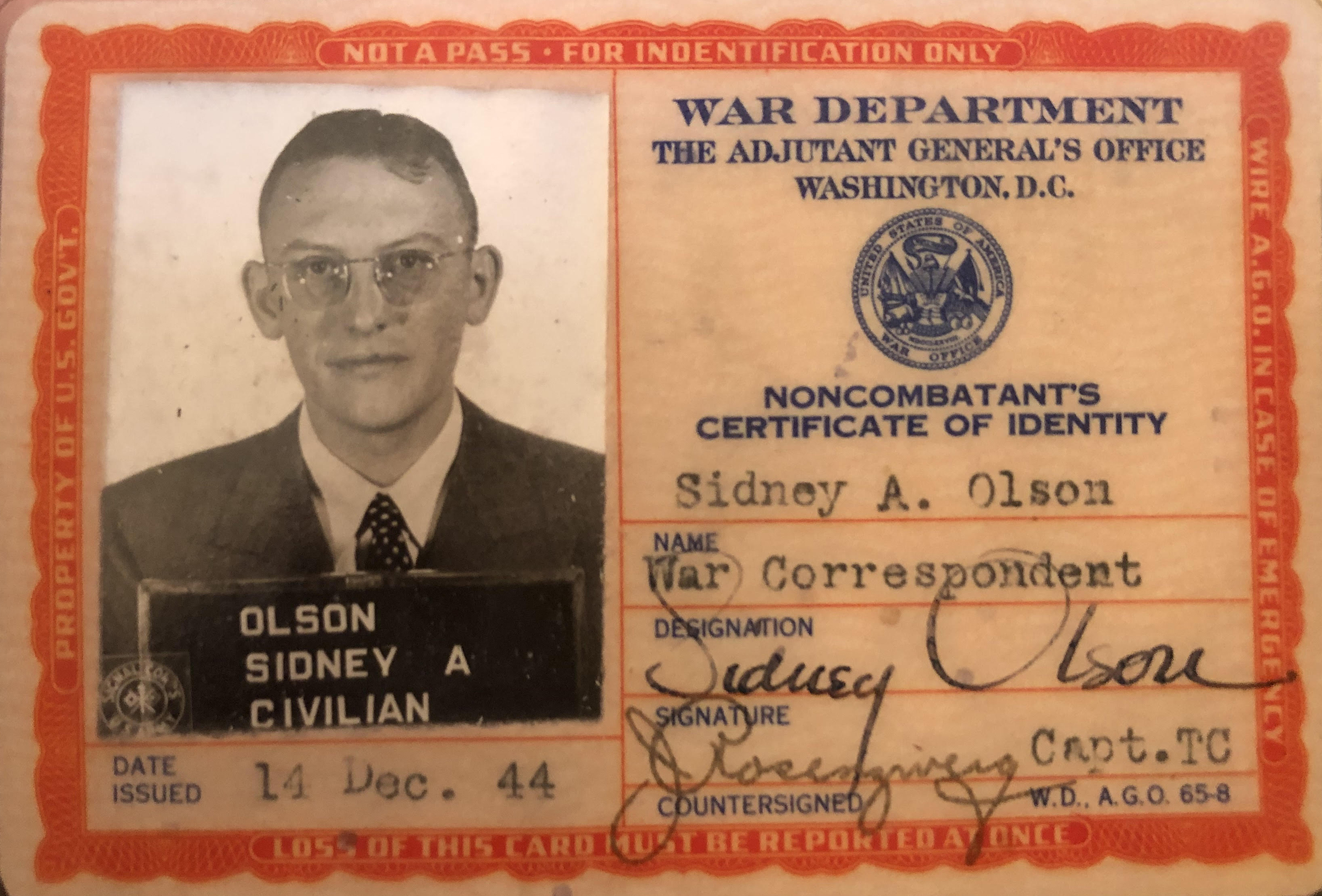
Olson’s personal war story began in a muddy trench in Kapelsche Veer in the Netherlands, in the wake of the Battle of the Bulge. By Feb. 25, he had flown “most of the front repeatedly in Piper Cubs” and “only had my helmet blown off once,” per a cable to TIME. On March 29, ahead of interviewing the legendary General George Patton, he cabled TIME news bureau chief David Hulburd suggesting the magazine put Adolf Hitler on the cover “in two weeks hence,” arguing that the war’s end was nigh. “There is plenty of bloody fighting going on but it’s very much like Joe Louis circling a groggy opponent looking for the exact spot to produce a quick kill and it’s very hard to realize that this is finally it.”
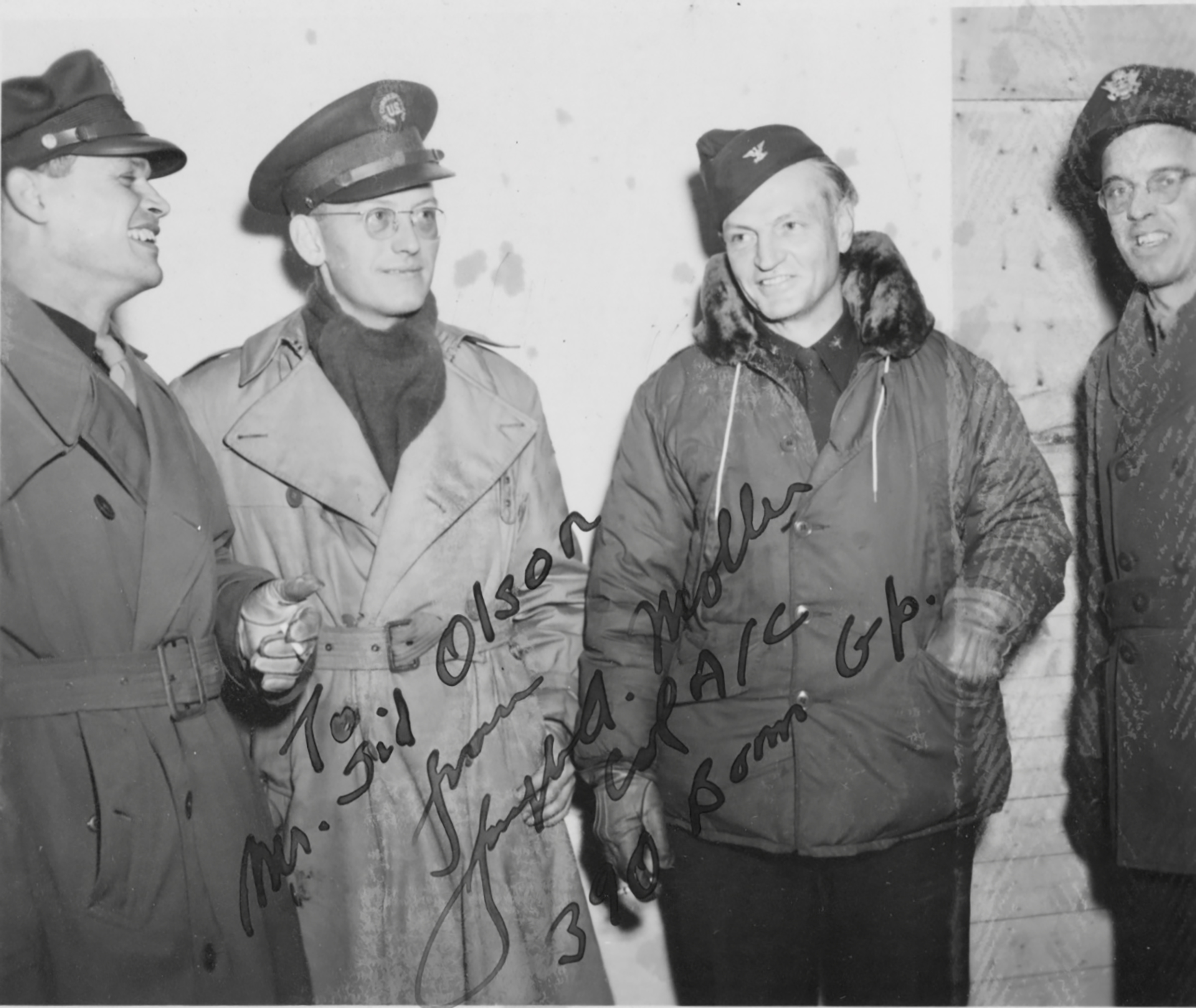
Before Olson arrived in Europe, the Soviet Red Army had already begun liberating concentration camps in Eastern Europe; they reached Auschwitz, where one million Jewish people died, in January of 1945. Then, on April 11, 1945, the U.S. had liberated Buchenwald and had Dachau, located on the site of an abandoned munitions factory near Munich, in its sights. Since the camp’s establishment in 1933, nearly 200,000 people had been imprisoned there; in the first months of 1945, it saw more than 100 deaths a day.
By the time three U.S. Army divisions approached the Dachau complex, the main camp and its subcamps together held 67,665 registered prisoners, about one-third of whom were Jewish. The other two-thirds were characterized as “political prisoners,” opponents of the Nazi regime — “the very earliest Hitler haters” as Olson put it in his cable — such as Communists, Social Democrats, trade unionists, and other minority groups including Jehovah’s Witnesses and Roma people. On April 26, three days before the Americans arrived, Nazi SS officers evacuated about 7,000 Dachau prisoners in a so-called “death march,” part of their attempt to retain hostages and to minimize the number of prisoners telling liberators about the abuses they suffered. Many died of starvation or were shot dead if they trailed behind.
The next day, the date of Olson’s cable to TIME, happened to be the correspondent’s 37th birthday. Unbeknownst to him at the time, it was also the day Nazi dictator Adolf Hitler was found dead in his underground bunker in Berlin.
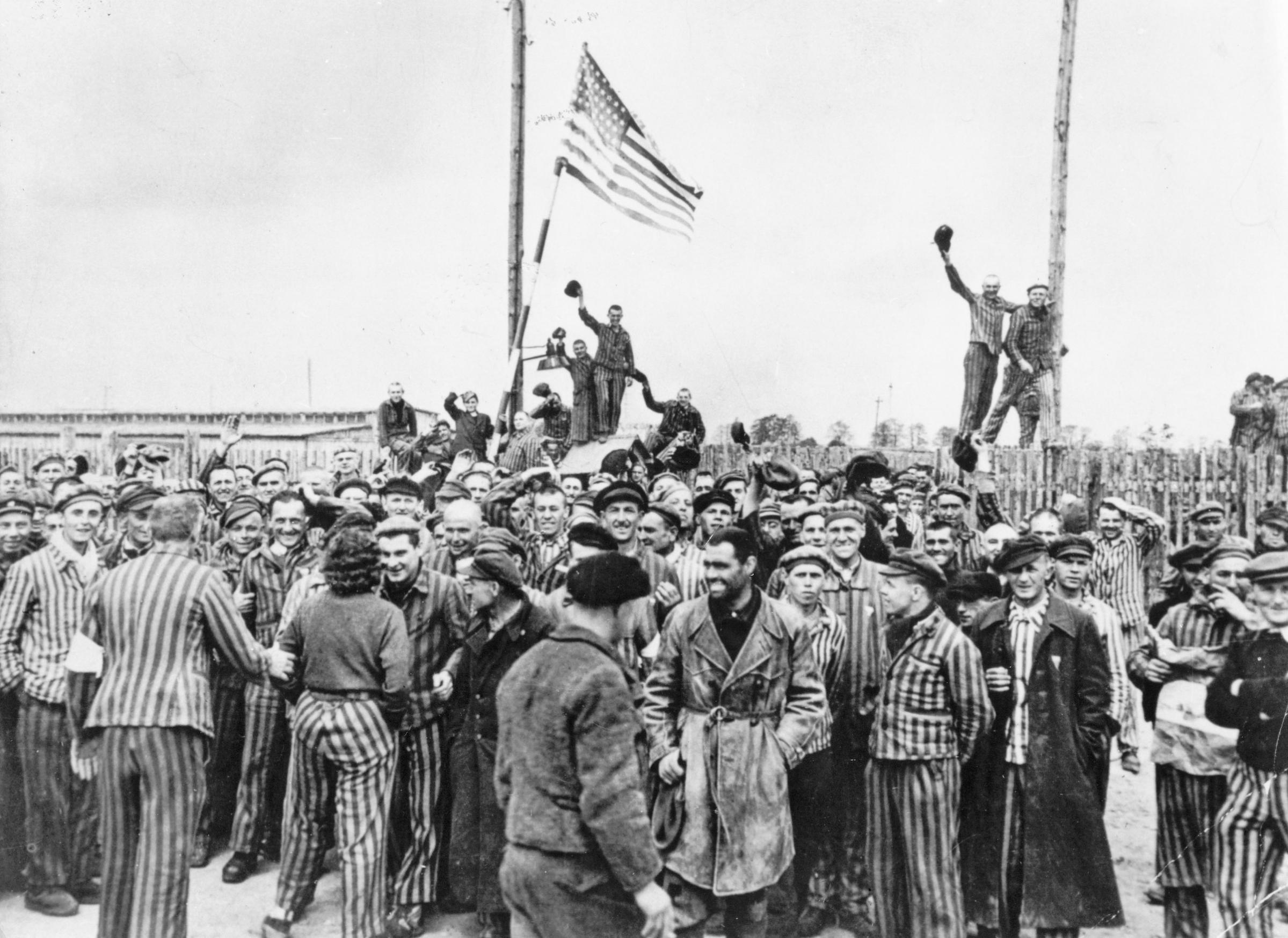
Olson’s account of the horrific conditions at Dachau was part of the most graphic coverage of the war to date. Journalists had received reports about the existence of concentration camps and of the massacre of millions of predominantly Jewish people, but reports of these statistics still seemed abstract to many at home. In 1945, the vast majority of Americans believed reports about concentration camps, but seriously underestimated the number of people killed in them. (Interestingly, a separate survey that year revealed that most Americans thought it was important for the public in the U.S. as well as in Germany to be confronted with photos of the atrocities.)
The camps seemed abstract to many of the journalists on the front lines too — until they saw for themselves. Correspondents were often mistaken for liberators; in some cases, they had in fact beat the liberators to Nazi-occupied areas. In a second cable, Olson said he heard a German tried to surrender to New York Herald Tribune correspondent Marguerite Higgins, and that the Nazis raised a white flag when she arrived.
Correspondents’ bosses back in the U.S. couldn’t quite believe the stories either. In many cases, they excised details they thought must have been exaggerations, explains Ray Moseley in Reporting War: How Foreign Correspondents Risked Capture, Torture and Death to Cover World War II.

The final edit of Olson’s account that appeared at roughly 800 words in the May 7, 1945, issue of TIME was mostly celebratory — with Olson’s desired cover image of Hitler, his face crossed out with a red X. The story starts with Olson entering to the sight of dead bodies, then transitions to the celebrations of the inmates. “There is nothing you can do when a lot of hysterical, unshaven, lice-bitten, half-drunk, typhus-infected men want to kiss you,” he explained. “It is no good trying to explain that you are only a correspondent.” The piece ends on a heartwarming note: “One giant Russian held me for at least 30 seconds while he kissed all over the U.S. insignia on my coat.”
This arc is no coincidence, says Barbie Zelizer, director of the Center for Media at Risk at the Annenberg School for Communication at the University of Pennsylvania and author of Remembering to Forget: Holocaust Memory through the Camera’s Eye. Though it was normal for correspondents’ cables to be edited before appearing in print and there is no record of the editors’ decision-making process, the framing of this particular example was part of a trend, reflecting an effort to stay on that idea that the war is over. It leaves out paragraphs from the original cable about skirmishes and fighting that was still taking place at the camp — details that, as Zelizer puts it, could have been a whole other story.
“There is a kind of urge to deliver a false absoluteness that the battles are behind you,” says Zelizer, who reviewed Olson’s files, “at a moment in time when certainty was just about the last thing anyone could imagine.”
Some of the goriest details were also left out. The TIME article excludes Olson’s description of a Nazi fatally shot in the back, slumped over his sandwich and beer, still bleeding out. Editors also took out Olson’s account of what was, for him, the most dramatic experience of the day.
“As we got out of the camp, the Germans began to shell Dachau,” he writes. “The shelling after everything else literally scared the living daylights out of us.” And he was already at his wit’s end.
“The shelling was a creeping barrage and it finally got close enough so that the doughs [American infantrymen] ducked into cellars and so did we, although there again facing the agonies of the question whether or not the cellar houses live Nazis with burp guns. The barrages were coming at three-minute intervals we decided, so we made a run for it after each barrage. But we got hopelessly lost. This was sheer hell because there were no landmarks to guide us but the interminable stretching barracks that all look the same. Had they been cleared? There was no one to say…
After Olson and two other journalists, Walter Ridder of the Saint Paul Dispatch and Howard Cowan of the Associated Press, are nearly mistaken for SS troops, the correspondents made it to their Jeeps amid the “crash of German shells,” while still looking out for mines and booby traps.
U.S. troops liberated the survivors of the Dachau death march in early May. By Victory in Europe Day, May 8, Olson was in Paris.
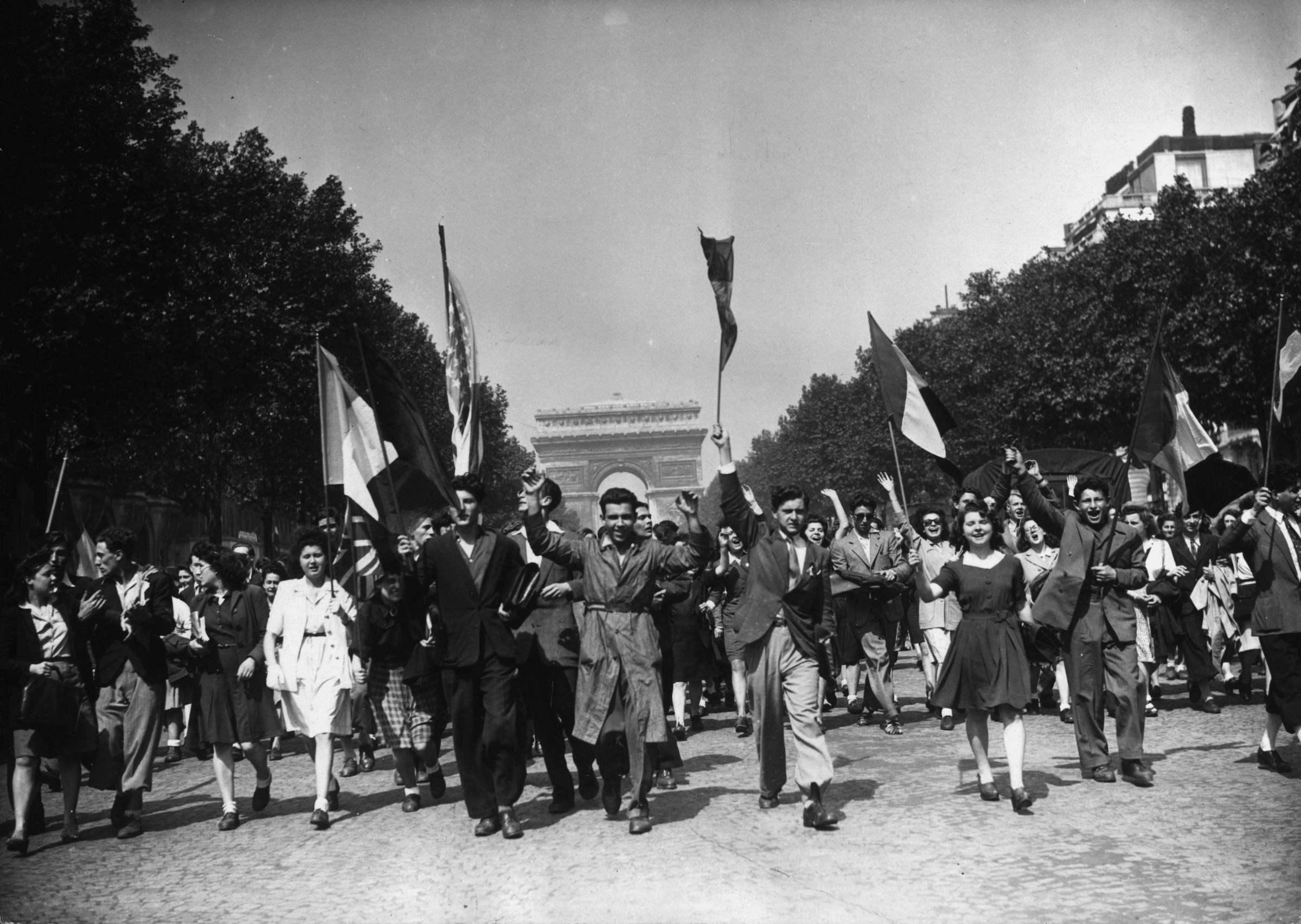
Read Olson’s report in the May 7, 1945, issue of TIME, here in the TIME Vault
By the next month, Olson was home. In the years that followed, when his war experiences came up, he too left out some of the gorier parts.
He segued to Fortune and LIFE, then moved to Hollywood in 1950 and did a six-month stint screenwriting for Paramount Pictures, before pivoting to advertising. He retired in 1973. He didn’t seem visibly rattled by his war experience, his family recalls, but he didn’t want to talk about it either. His son John, now 77, remembers browsing LIFE in the post-war era; whenever he came across World War II-related coverage, he’d ask his father about it. The liberation of Dachau came up once, and while John has long forgotten the actual exchange that followed, his body language spoke volumes. “I could see him tense up just talking about it,” John says.
Similarly, Olson’s granddaughter Margot Clark-Junkins tried to ask him about it after visiting the site of Dachau while studying abroad. “He just kind of gazed down the river and said ‘I don’t really like to talk about that,'” she recalls. “And I dropped it right then and there.”
But now, his family won’t drop it again.
In the year or so after Olson’s death in 1995, Olson’s daughter Whitney Clark, now 82, would periodically bring out her late father’s papers for the family to look through. But it was only in 2018 that Clark and her daughter Clark-Junkins took on the task of organizing the World War II-era papers, including the file on the liberation of Dachau.
Clark-Junkins, 55, hopes to turn her grandfather’s account into a book. Clark initially only wanted to keep the files in the family, but changed her mind, believing people outside the family should know what Olson saw too, now more than ever, given the surge of antisemitism and rising nationalism worldwide 75 years later.
“The horror has to be kept alive,” says Clark. “Right now it’s really stunning how everyone seems to want to slip-slide into some form of prejudice. I think we should make a big deal out of it and just remind people, we’re letting it go again. The fear of the other—why can’t we get over that?”
More Must-Reads From TIME
- The 100 Most Influential People of 2024
- Coco Gauff Is Playing for Herself Now
- Scenes From Pro-Palestinian Encampments Across U.S. Universities
- 6 Compliments That Land Every Time
- If You're Dating Right Now , You're Brave: Column
- The AI That Could Heal a Divided Internet
- Fallout Is a Brilliant Model for the Future of Video Game Adaptations
- Want Weekly Recs on What to Watch, Read, and More? Sign Up for Worth Your Time
Write to Olivia B. Waxman at olivia.waxman@time.com